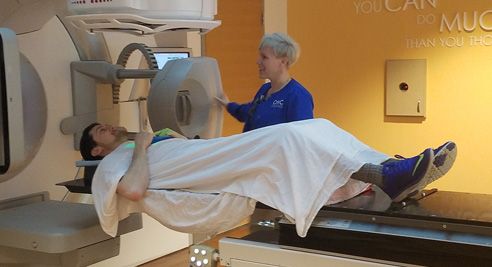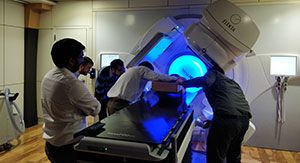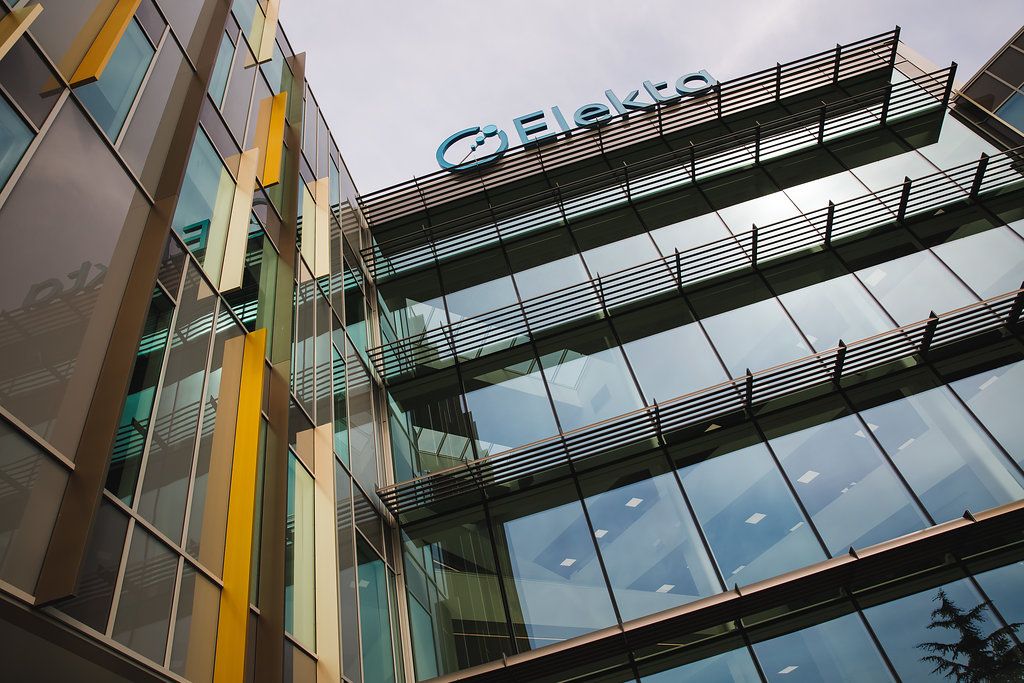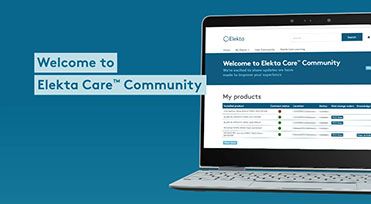Texas center’s linacs ready to treat in record time

UT Health San Antonio MD Anderson Center leverages Elekta rapid install protocol and matching of existing Versa HD to get two new Versa HD systems operational in only 1.5 months

At the UT Health San Antonio MD Anderson Cancer Center, Elekta pit crew-style linac installation teams in early April 2018 installed two Versa HD™ systems in 19 days, a process that typically takes about seven weeks. Then – because the Mays Cancer Center chose to match the incoming linacs to their Versa HD installed in 2014 – acceptance testing and beam modeling were decreased from the usual four weeks to only seven days.
By June 8, UT Health San Antonio MD Anderson physicians treated their first patients on one of the Versa HD machines, and two weeks later began treating on the second system. What was traditionally accomplished in three months was done in half the time.
The implication for the cancer center and for any cancer clinic using at least one Versa HD is that the true fast track to extra radiotherapy capacity is to match to an existing Versa HD. Elekta’s team-based linac installation protocol is now standard practice for all Elekta customers in North America and will soon be offered outside of the United States.
For U.S. customers installing their first Elekta linac, the company offers Accelerated Go-Live (AGL), in which Elekta provides pre-defined beam models for the Monaco® treatment planning system. As the name suggests, when a new customer takes advantage of AGL, they can expect weeks to be trimmed from the commissioning process as there is no need for on-site beam modeling.
Many hands make light work
Elekta sped up the installation phase by dispatching engineers to the cancer center – two teams – to complete all the necessary tasks, according to Barry Lalone, Elekta’s Hardware Installation Manager, Region North America.

“For the first week, they were putting the cabling together and assembling the linac, which is a very time-consuming process,” he says. “If you have several people pulling cable instead of one you can do it in about five days instead of four weeks.”
By the end of April, the cancer center was ready for the first stage of acceptance testing, which they accomplished in two days, the standard amount of time needed for initial acceptance of any linac if no snags are encountered.
It was in the second phase of acceptance – dosimetry acceptance of the Versa HD systems – that the center realized truly significant time-savings.
“As soon as they were able to scan the respective new PDDs and profiles, they could see right away how they were comparing to those of the existing Versa HD.”
“In 2014, the cancer center staff had collected profiles and percent depth doses [PDD] for all photon and electron energies for that system, so they could use them for the two new Versa HD systems as preferences with their BEAMSCAN™ [PTW, Freiburg, Germany] water tank system,” Lalone says. “As soon as they were able to scan the respective new PDDs and profiles, they could see right away how they were comparing to those of the existing Versa HD. Our engineer could simply adjust to compensate for too-flat beams or not-flat-enough beams.”
He adds that the speed of BEAMSCAN was critical.

“It scans up and down, left and right, in and out to make all these measurements and superimpose them to the previous ones with extreme speed,” he observes. “And it took a few alterations to adjust the parameters to the 2014 Versa HD. The result was that acceptance testing for two Versa HD systems was done in two days instead of a week or more.”
Because the process was accelerated – and with the added assistance of two Elekta engineers – cancer center physicists had time to conduct additional measurements.
“They went above and beyond the recommended measurements,” Lalone explains. “Instead of just doing a subset of everything, they expanded that set to include smaller and larger fields. These extra fine-tuning measurements made them feel much more confident in the closeness of the beam match between the three systems.”
Cloning existing linac drastically shortens commissioning time
Matching the two new Versa HD systems to the 2014 linac created virtual clones; the three systems shared nearly the exact PDD and profile measurements, matching within 0.2 percent and 0.5 percent, respectively. Consequently, the cancer center was able to avoid the comprehensive commissioning process needed for any given treatment planning system.
“The biggest gain was that they didn’t have to do any beam modeling after that because all the beams were matched to the existing one.”
“The biggest gain was that they didn’t have to do any beam modeling after that because all the beams were matched to the existing one,” says Alexander Solodkin, Elekta Senior Manager, Operational Physics. “Therefore, the time it normally takes for beam modeling was eliminated. Typically, it would have taken a week to 10 days to get the first beams, then every other day for the next photon beams and then within two weeks they begin getting electron beams. And they have to verify everything and double- and triple-check. They didn’t have to go through that again.”
By leveraging the existing beam models, the cancer center completed commissioning in three days, shaving three weeks off the commissioning process.
UT Health San Antonio MD Anderson began treating the first test patients on one of the new Versa HD systems on June 8 (the second on July 2), although the clinic could have been ready to treat even sooner.
“Being an academic institution, they put in some effort initially in teaching their students,” Lalone says. “If the cancer center were a private cancer clinic or if department administration were asking them to start treating patients as soon as possible, they could have finished a couple of weeks earlier, like mid- to late May. They have the luxury at this site of having three other operational linacs, so they didn’t have undue pressure to go live right away.”
Added benefits include no extra therapist training and insurance against unscheduled downtime
In addition to time saved during acceptance and commissioning, matching the incoming systems meant there would be virtually no learning curve for cancer center staff, as well as the ability to have identical back-up systems if a linac unexpectedly goes down.
“All of their therapists have been working on the 2014 Versa HD, so there was minimal to zero training needed for them to take over.”
“All of their therapists have been working on the 2014 Versa HD, so there was minimal to zero training needed for them to take over. If this were a linac from a different vendor, they would have required three days to a week for therapist training,” Lalone notes. “It’s also highly recommended to have at least two exactly matched linacs in the clinic to have redundancy if a machine goes off-line. You don’t have to think twice, you don’t have to recalculate, you just bring the patients from the linac under service to an operational one and start treating.”
Expectations exceeded
Although the original timeline for commissioning the two new Versa HD systems was an April install and clinical go-live by August 2018, the cancer center and Elekta managed to condense the preparation phases substantially through an improved installation process and by matching the incoming systems. Looking back on the project, Lalone had thought the original schedule might be overly ambitious.
“To have both systems up and running in just a month-and-a-half was a tremendous accomplishment.”
“The cancer center physicists told their physicians that they would be treating by August 1,” he says. “April to August to install, accept and commission not one, but two linear accelerators, is only four months. To have both systems up and running in just a month-and-a-half was a tremendous accomplishment.”





